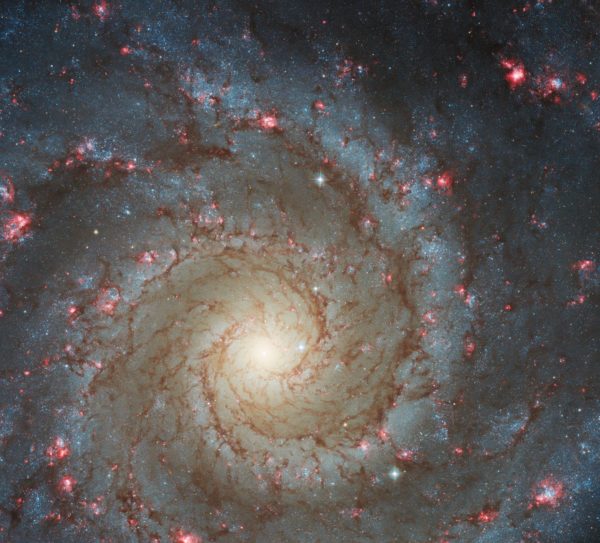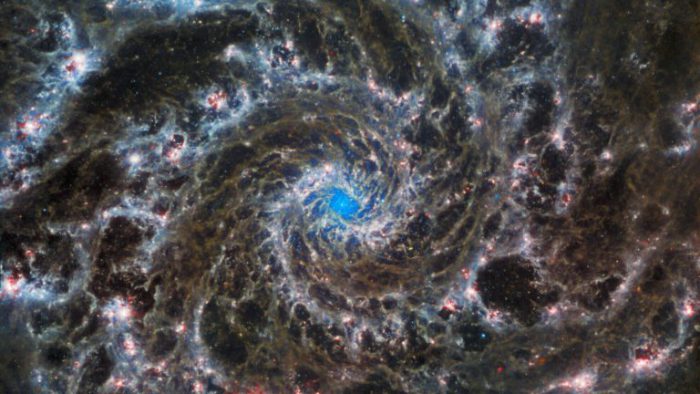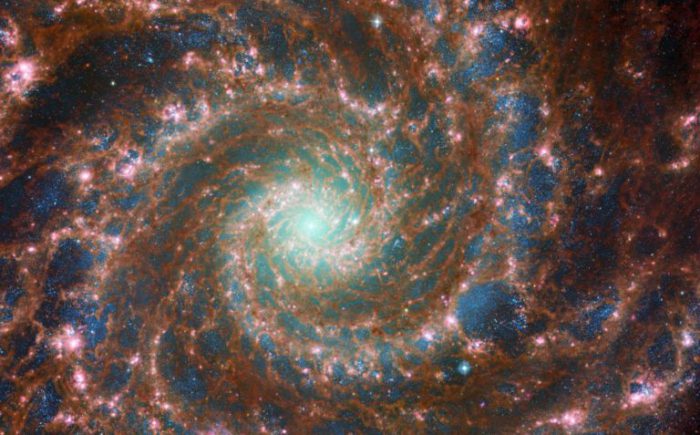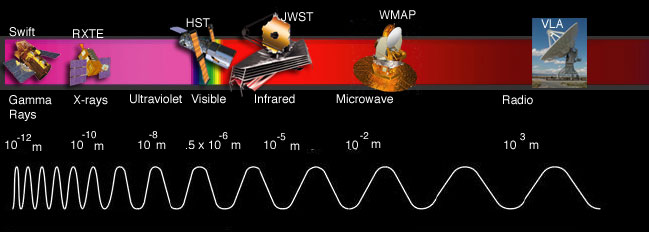For three decades, the Hubble Space Telescope has been our most powerful instrument for looking into deep space.
Then, on Christmas Day 2021, the James Webb Space Telescope was launched—an even more powerful, infrared instrument that could see things that were far out of reach of even the Hubble.
You might think that it and the Hubble were destined to be rivals. But you know what? These two mighty devices can work together!
Proof of that was delivered recently by NASA, who gave us a unique look at the M74, also known as the Phantom Galaxy. Thanks to these gadgets, we're seeing triple of this spooky celestial swirl.
One image from Hubble ...

(ESA/Hubble & NASA, R. Chandar)
One from the James Webb ...

(ESA/Webb, NASA & CSA, J. Lee and the PHANGS-JWST Team)
And finally, the two laid over each other!

(ESA/Webb, NASA & CSA, J. Lee and the PHANGS-JWST Team; ESA/Hubble & NASA, R. Chandar)
Wow! What a spectacular set of images! But it brings up a question: Why are the images so different?
On different wavelengths
The Phantom Galaxy is 32 million light years from Earth. (A light year is the distance that light can travel in a year and is the main unit of measurement for the universe.) For a human, that is a very long ways away. But for both Hubble and James Webb, it's pretty close—both telescopes have ranges of several billions of light years.
So both instruments can see the galaxy very clearly. Then why is the Hubble image full of pink and purple stars with a glowing, hazy centre, while the James Webb version has crisp, clear gray arms and a sharp, brilliant blue core?
The answer lies in how differently each instrument sees the universe. They are each designed to read a different part of the spectrum of light. This image from NASA shows the full spectrum of light, as well as what part of it certain telescopes (including Hubble and James Webb) are able to see.

Astronomers use many different types of instruments to see the full spectrum of electromagnetic radiation being released into the universe. (NASA)
Hubble is mainly an optical telescope and sees visible light, a.k.a. what we see. This means that if you could somehow float outside M74, you would see something pretty close to what Hubble does.
But James Webb is tuned to infrared light—this is a type of light that is just 'below' what we can see. This gives it a window into a whole other range of light 'information' that Hubble doesn't have access to. In particular, it is able to peer into that mysterious centre of the galaxy that is only a blur to Hubble.
And when you combine the powers of the two instruments? You get a picture of absolutely jaw-dropping clarity.
Mirror, mirror
Being tuned to infrared light is not what makes James Webb more powerful (or able to see farther into space) than Hubble. That superpower is all about mirrors!
Specifically, the mirror at the heart of each telescope. These mirrors capture light radiation and reflect it back in a focused way so that the instruments on board each telescope can process an image.
Hubble's mirror is wider than an adult human is tall. That's pretty big. But the James Webb mirror is nearly three times that width. It greatly increases its power, allowing it to see to the outer reaches of the known universe. Check out this video from NASA that shows the mirror side-by-side.









